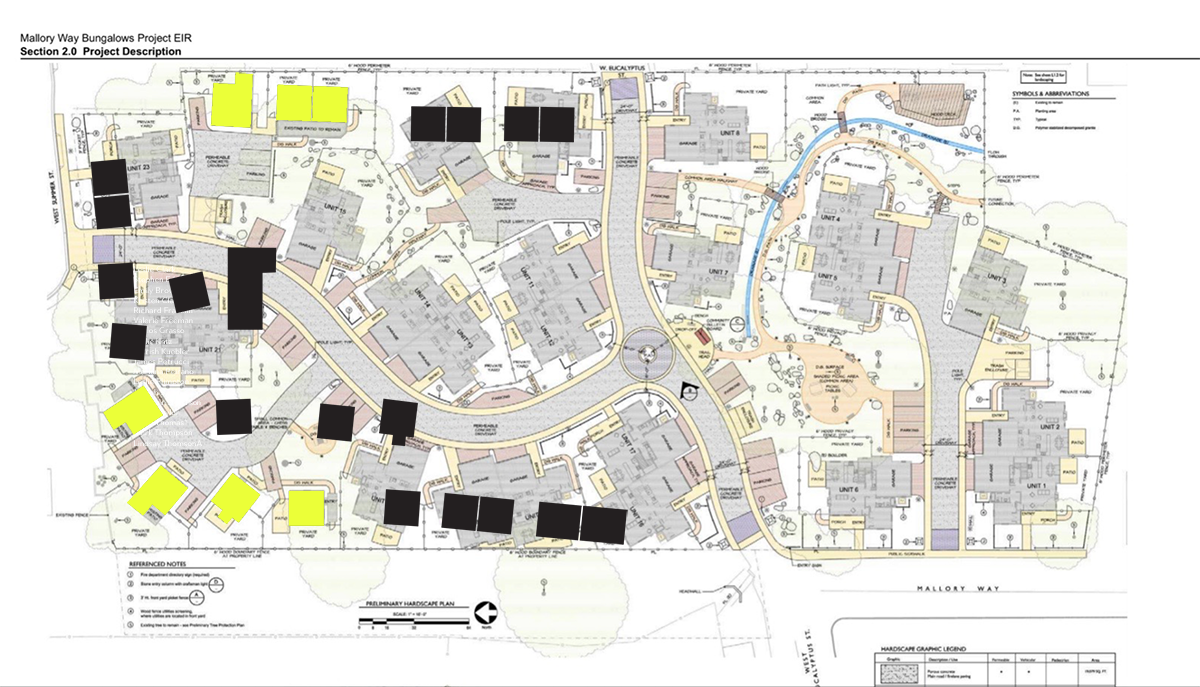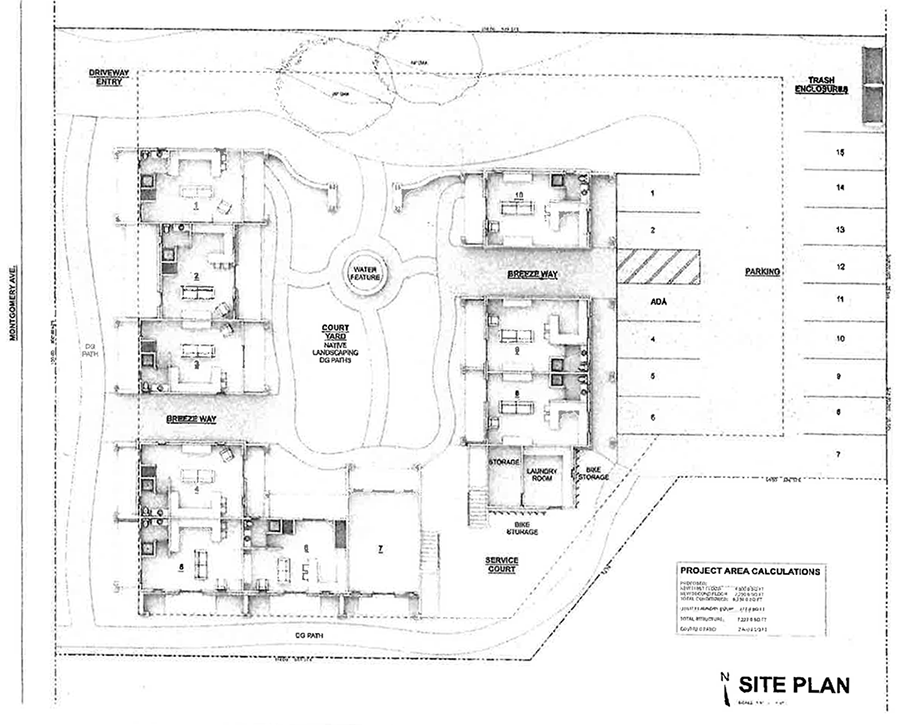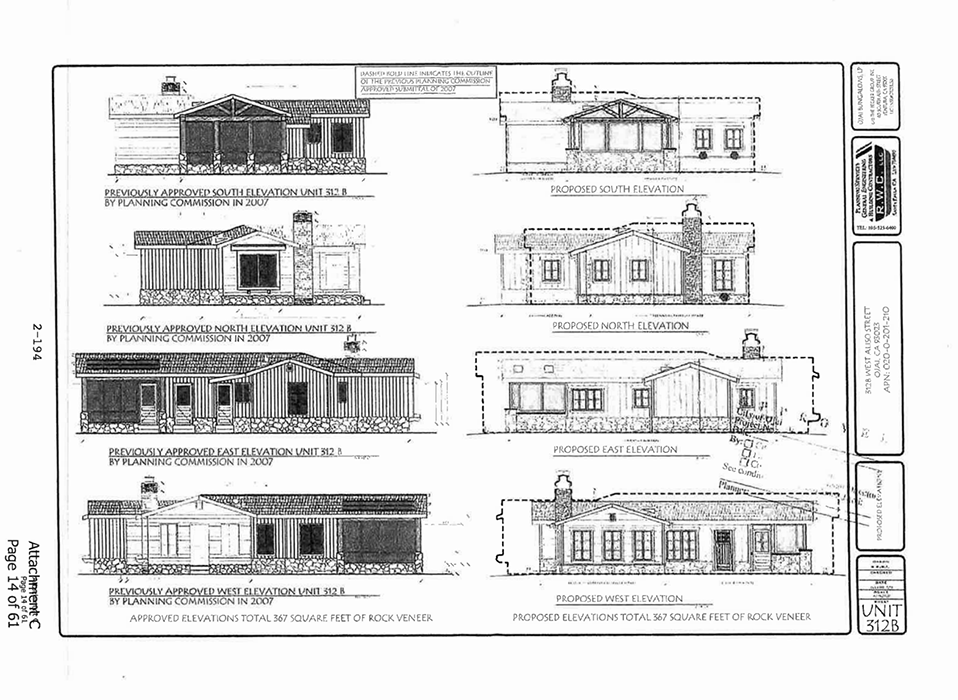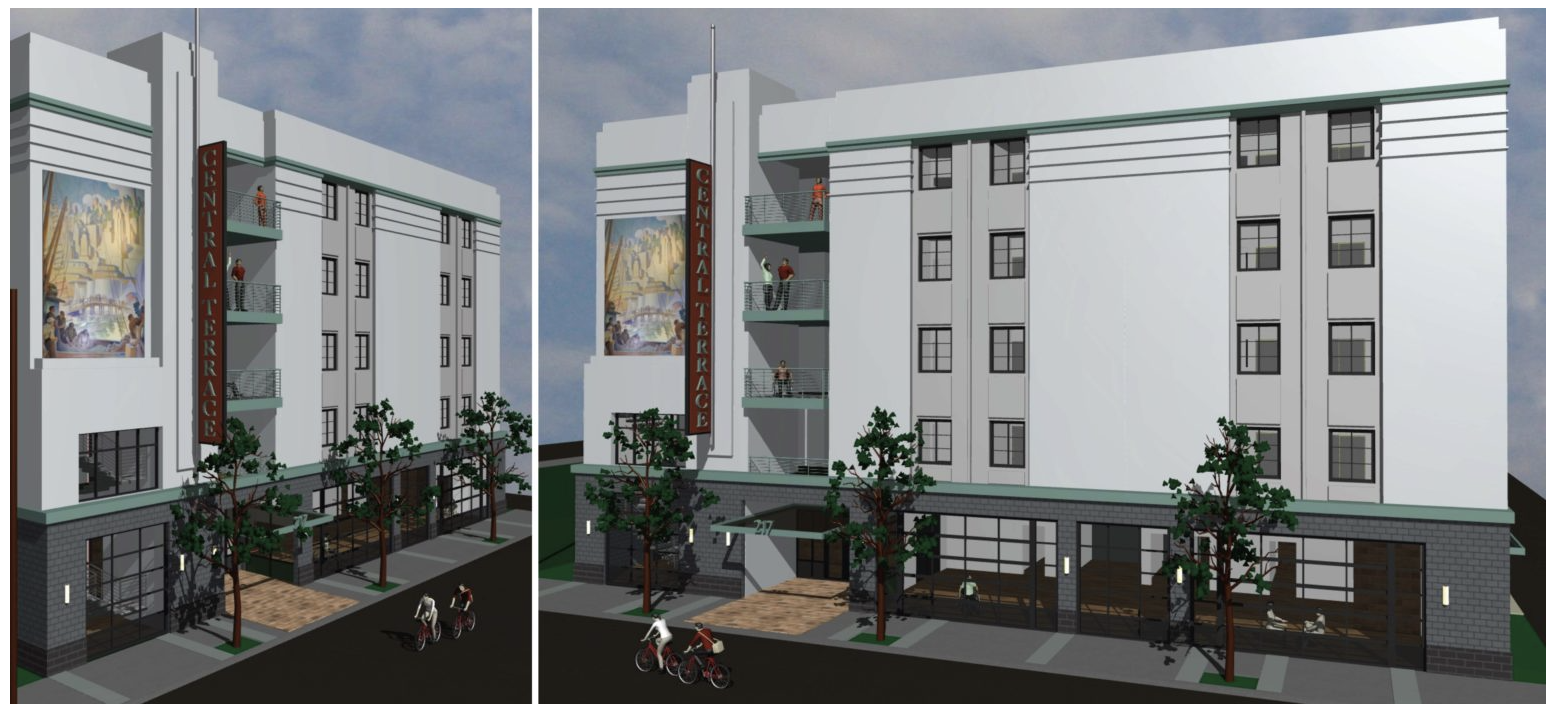Don't it Always Seem to Go
Written by Andra Belknap“I think this is a poem,” Emma whispers softly.
“I used to ride horses with her!” my mother exclaims.
The scene: three women, myself included, are watching an Ojai City Council meeting (specifically, the YouTube live stream). The speaker, Dr. Deb Murphy, is about to burst into song.
It’s not an unfamiliar scene. It’s not even the first time I’ve seen a public comment delivered via song. The night’s topic: a proposed housing development.
As Councilman Ryan Blatz lamented four hours into the late-night meeting, citizens often arrive at contentious City Council meetings with zero context. He’s not wrong. So first, some background information (derived from the 300-page staff report).
Becker Proposal Background
The proposed project from the Becker Group would occur in four phases, resulting in the demolition of 18 cottages at 412 Mallory Way, the refurbishment of the eight Cottages Among the Flowers (312 West Aliso Street), and the relocation of both sites’ current residents. (I’ll refer to the existing Mallory and Aliso street units collectively as “the cottages” through the remainder of this report.)
LEFT: COTTAGES AMONG THE FLOWERS, 312 WEST ALISO STREET, PHOTO FROM AN ANONYMOUS TENANT | RIGHT: MALLORY BUNGALOWS, 412 MALLORY WAY, PHOTO FROM ZILLOW
The Becker project includes the construction of 50 units of housing between four sites: two new units at the aforementioned Aliso Street cottages, 23 new units on Mallory Way, the addition of 15 new units of affordable housing at 304 South Montgomery Street (currently vacant), and the addition of ten new housing units at World University (107 North Ventura Street, currently vacant office space, also where many Ojai millennials attended driver’s ed). Given that the project includes demolition, refurbishment, and the addition of new housing units, the community will net 32 new units of housing (the project encompasses a total of 64 housing units.) Five of the units will be deemed affordable for low-income individuals.
Crucial to this debate is that the aforementioned cottages are occupied, and much of that housing is considered affordable. According to the City Council’s staff report, the 18 Mallory Way cottages were historically rented at affordable levels (six at low income levels and 12 at moderate income levels). As Dr. Murphy, a local chiropractor and resident of the cottages, said, “It’s important that people know my neighbors are affluent of the soul, but not financially. I surmise most make under $30,000 a year.”




July 12, 2022 City Council Meeting
More than 100 people showed up to City Council Chambers Tuesday, with countless more (like myself, mom, and friend Emma) watching via live stream. The public showed up relatively united in opposition to the proposal, arguing that a) the project primarily creates market-rate housing and doesn’t sufficiently make up for the lost affordable housing, b) the community is experiencing severe drought and an uncertain water future (a June update from the Ventura River Water District estimated, “at the current lake levels and rate of usage there are 3 to 4 years of water left if we do not receive significant rain”) and c) the new housing will add additional cars to traffic-clogged roads.
And people are mad. Tom Francis of the non-profit Simply Ojai made an outright political threat to the Council, “If this development agreement is approved tonight, Simply Ojai will file a referendum this week… I offer you this information about our intentions as a courtesy, to allow you the opportunity to avoid making the mistake of voting ‘yes’... thereby requiring a referendum that would cost the Ojai taxpayers over $30,000.”
Yikes. Judy Murphy’s anger was also palpable. Murphy, who presented an affordable housing project proposal to the city back in 2015 alongside Bill Miley, provided additional context to the night’s debate, “Bill and I had a marvelous proposal for the City Council in 2015, or thereabouts, by People’s Self Help Housing. It would have provided all low-income housing for 40 units… about 100 people came out and said, ‘no, we can’t have that!’ They’re here tonight, and they’re still saying no.”
Quick Interlude
She’s not wrong. Miley and Murphy faced a significant community backlash when they presented a 40-unit affordable housing concept, supported by Central Coast affordable housing non-profit People’s Self Help Housing, to the community back in 2015-2016. I reported on the concept at the time as an Ojai Valley News reporter. The project proposal was highly controversial, as portions of the proposed site are named in the Libbey Park Master Plan. A petition in opposition to the project was circulated and signed, and many of the signatories showed up to a similarly dramatic City Council meeting on February 9, 2016. Former Mayor Johnny Johnston, immediately prior to his mayoral run, publicly referred to the project as “offensive.”
One architect of the proposal, Miley, a true fixture at City Council meetings, rebutted the opposing arguments in a sassy and well-informed fashion (as he often does). I encourage you to take a look at the video because it’s funny (well, I think it’s funny) and also because it provides a helpful overview of the city’s Housing Element: a piece of the city’s General Plan mandated by state law. Miley also pledged to participate in the creation of the city’s 2021 Housing Element on the assumption that he would still be alive at the time. Bill Miley, I salute you!
Now, Back to the Present!
Much of Tuesday’s debate focused on the purported affordability (or lack thereof) in the development proposal and the community as a whole. “My concern is for people who live on Mallory and Aliso,” said Former City Councilman Severo Lara to many of his former colleagues, “If this project is to go on, we really need to evaluate what’s a realistic and practical way to relocate people that are living [in the cottages]. Because there’s no housing here in the City of Ojai.”
The Becker proposal includes 25 units of “affordable” housing. As mentioned, five of those housing units would be mandated affordable for folks at the low income level (that means an annual income of up to $70,250 for a family of one, or $100,350 for a family of four) and 20 units of affordable housing at a moderate income level (up to $96,950 annually for a family of one and up to $138,500 for a family of four). Doesn’t sound very affordable, right? That’s the problem.
Grace Malloy, a member of the Ojai Valley Municipal Advisory Council and creator of the Ojai Community Farmers’ Market (thank you, Grace!), argued that the community needs more housing at the lower income levels (the Housing Element supports her argument). Extremely low income, according to the California Department of Housing and Community Development, is an income of less than $26,350 for a family of one and $37,600 for a family of four. Very low income (one step below the low income classification) is an annual income of less than $43,900 for a family of one and $62,700 for a family of four. The majority of the units deemed “affordable” in the Becker proposal are affordable only to those at the moderate income level.
Malloy argued that the Becker group has the resources to do better by the community. “Could these two properties [the cottages] just be your love letter to our community, and you could just break even this one time?” She asked. Murphy, co-creator of the 2015 proposal, provided her own perspective: “I hope that people realize that Jeff Becker and his group own this property. And we can’t tell them that they have to be sugar daddies,” she said.
Affordable housing projects tend to require public resources. That public support generally comes in one of two forms: cash, like the $1.2 million loan the City of Oxnard provided to affordable housing non-profit Many Mansions (I agree, weird name) for an 86-unit housing project, or, a city can donate land to an affordable housing developer, as Murphy and Miley proposed in 2015. To be clear: the city is short on cash, but they have identified numerous potential affordable housing sites (see pages 82-85) in the most recent Housing Element (as they are legally obligated to do).
JOIN US AT THE NEXT COUNCIL MEETING
This issue is expected to once again come before City Council on September 27.
After hours of public comment, the elected City Council members had the opportunity to say their piece. Bill Weirick said that the cottages would already have been demolished had the Council not taken action two years prior and suggested that the public didn’t realize he and Councilman Ryan Blatz had negotiated the affordable housing pieces of the proposal with the Becker group. Had they not, he said, there would be no affordable units in the proposal.
The meeting came to a close around midnight. After the five-hour long session, the Council voted 3-2 (the male members of the Council with the yes votes, Mayor Betsy Stix and Councilwoman Suza Francina in opposition) to send the proposal back to the Affordable Housing Ad-Hoc Committee (Blatz and Weirick) for additional negotiation.
Mayor Stix made a motion to scuttle the proposal entirely. “The City of Ojai should not approve more development for the wealthy when we do not know how much climate-driven drought and aridification is going to further diminish our scarce water reserves,” she said. Another helpful piece of context: we’re talking about home-building in the fastest warming county in the lower 48 United States.
“We cannot accept no. Because no means nothing,” Haney said.
And I, after viewing many hours of Council footage, finally noticed that the City of Ojai seal is affixed to the wood-colored speakers’ podium with brown duct tape.
This article was brought to you by OLO members
SUPPORT VORTEX FOR $5/MO






